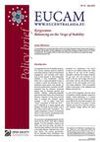Eastern Europe and Central Asia
Eastern Europe and Central Asia
Author(s): Natalia Shapovalova
Subject(s): Governance, International relations/trade, Developing nations, Geopolitics
Published by: CEPS Centre for European Policy Studies
Keywords: Eastern Europe; Central Asia; post-Soviet countries; international relations; multilateral relations; Russia's dominance; political relations;
Summary/Abstract: Relations between Central Asia and the post-Soviet countries of Eastern Europe have largely been developed in the shadow of Russia. Belarus, Moldova and Ukraine have established ties through integration projects in the post-Soviet space that are led by Russia, such as the Commonwealth of Independent States (CIS) and other initiatives. But against this, bilateral and multilateral relations between CIS countries have often been aimed at counterbalancing Russia’s dominance. GUUAM, for example, was an alliance between Georgia, Ukraine, Uzbekistan, Azerbaijan and Moldova formed in 1999; after the departure of Uzbekistan in 2005, it became known as GUAM. The organisation was conceived as an alternative cooperation project, and Moscow perceived it to be anti-Russian.
Series: EUCAM - Policy Brief
- Page Count: 6
- Publication Year: 2012
- Language: English
- Content File-PDF

